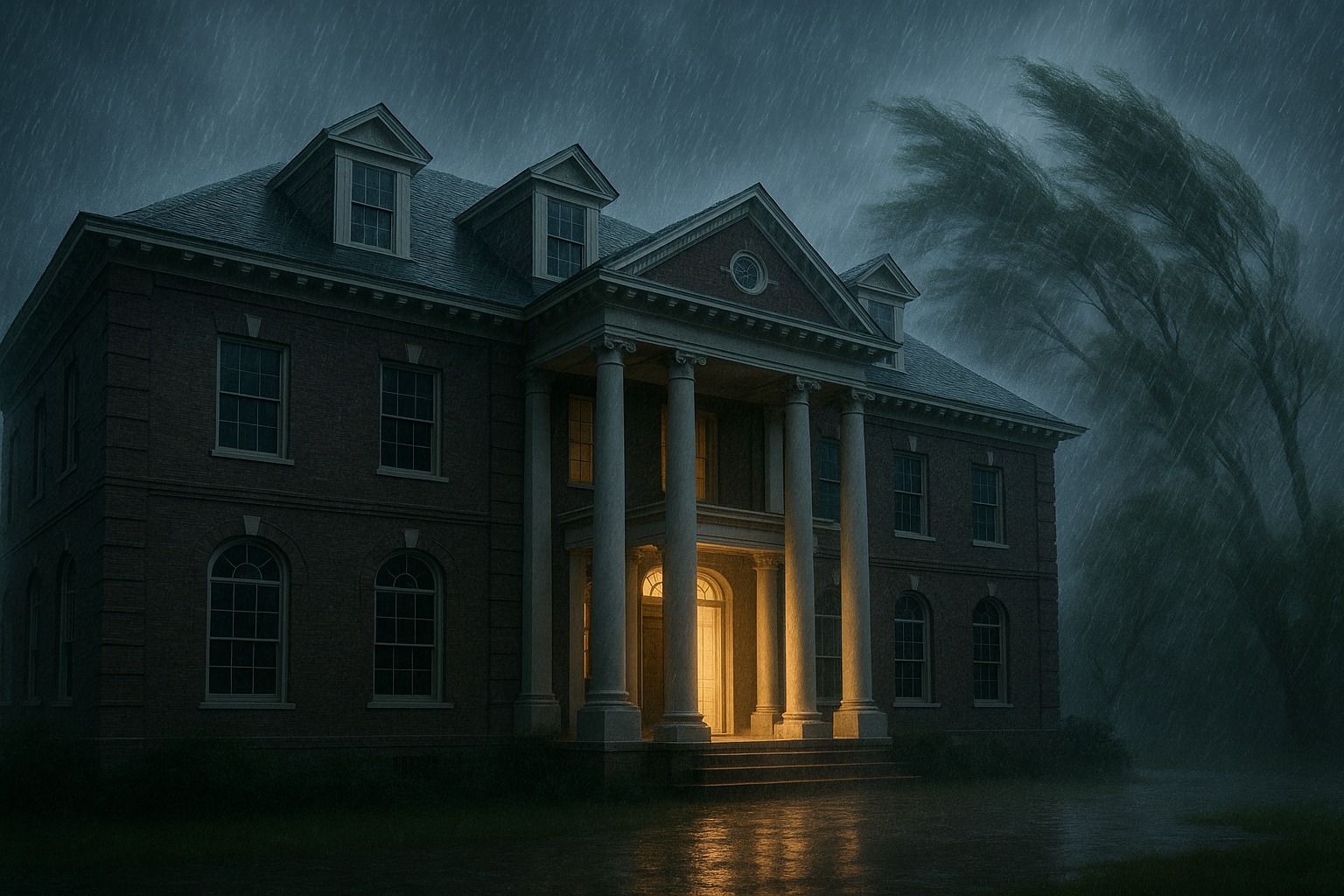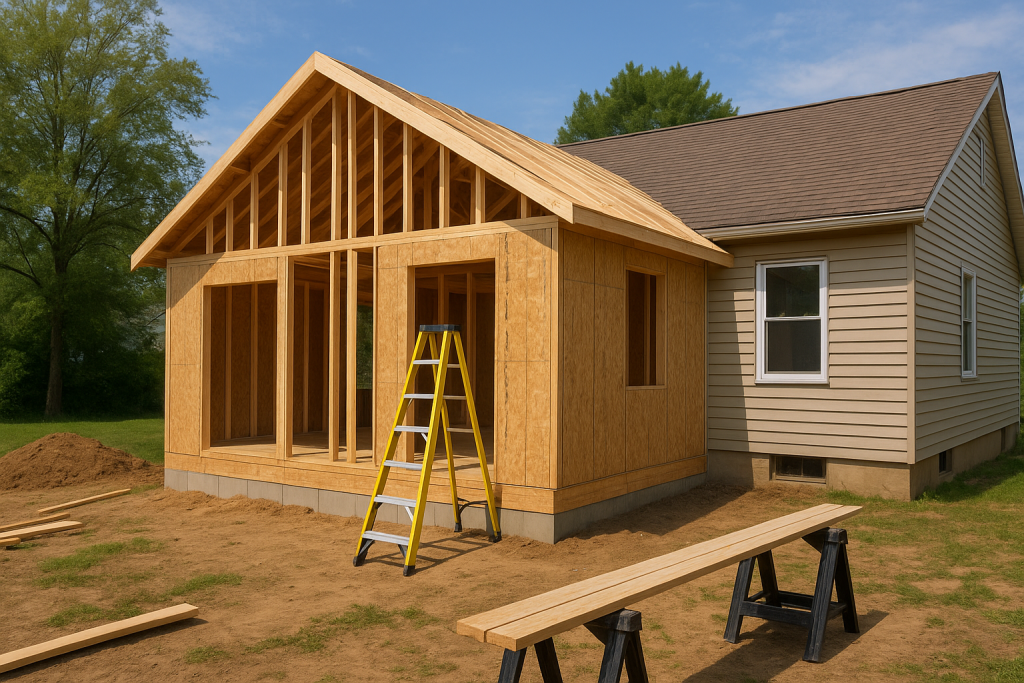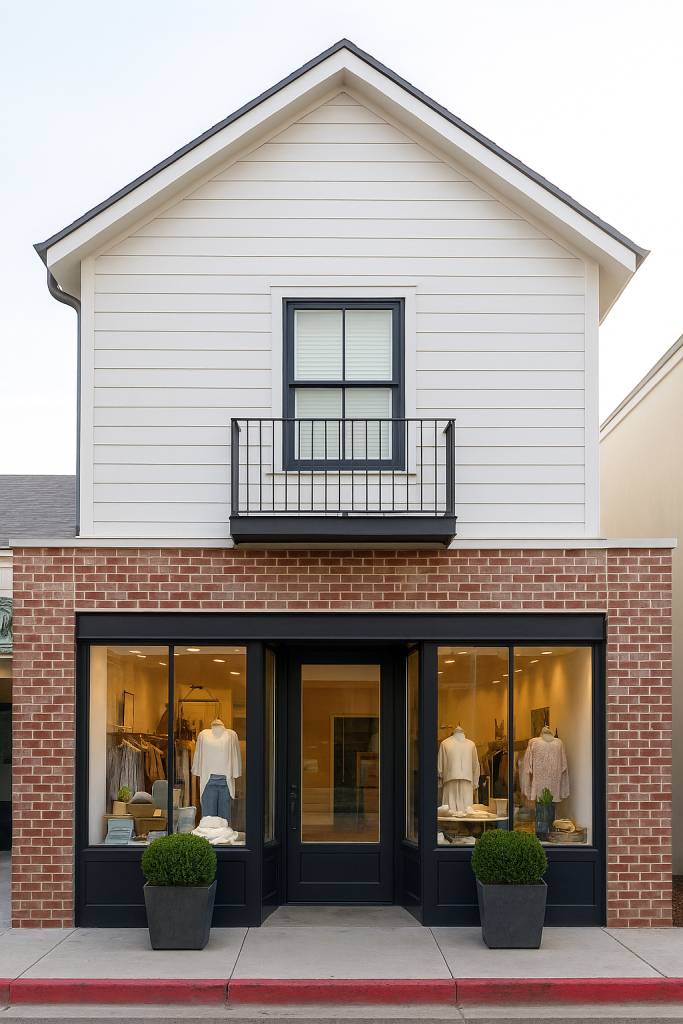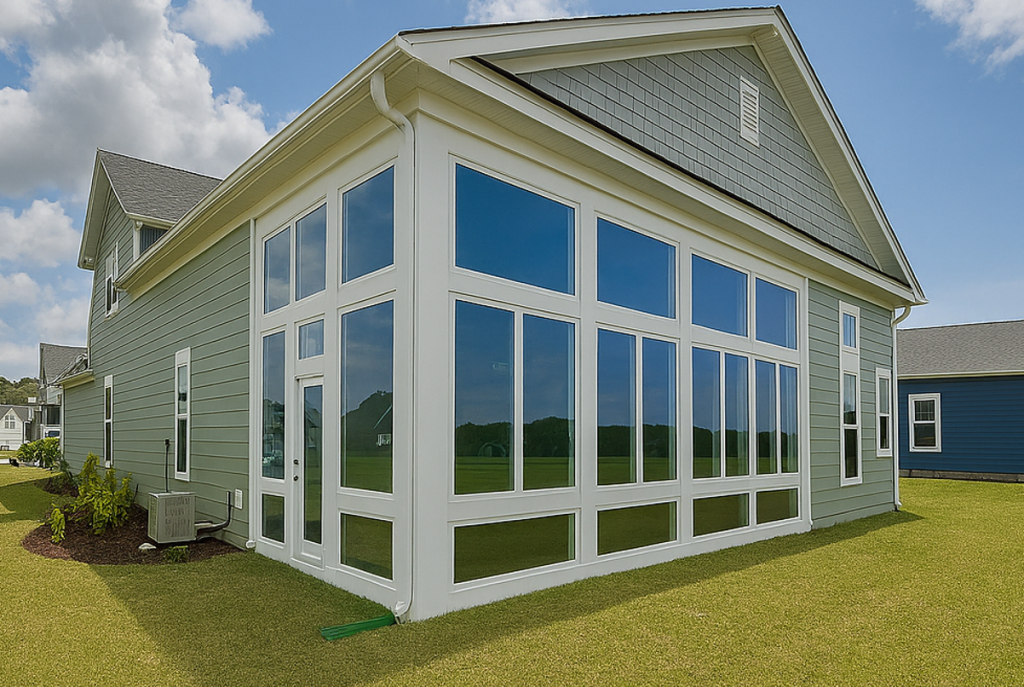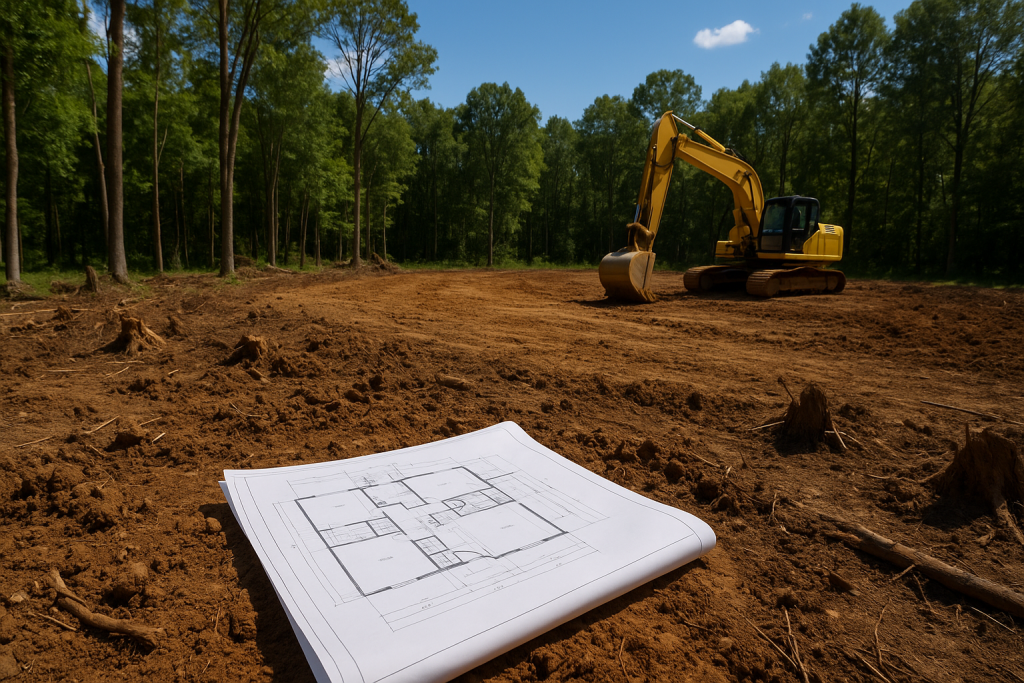Building Hurricane-Fortified Homes: Your Ultimate Guide to Storm-Resistant Construction
When Hurricane Andrew devastated South Florida in 1992, it fundamentally changed how we think about home construction in hurricane-prone areas. The storm’s 165 mph winds and catastrophic damage led to revolutionary building codes and construction techniques that have since saved countless lives and billions in property damage. As a General Contractor in Myrtle Beach, Carolina Bays Homes practices best building practices and also offers many hurricane fortified upgrades that will be discussed in this article. Today, building a hurricane-fortified home isn’t just smart planning—it’s essential for anyone living in coastal or hurricane-prone regions.
Understanding Hurricane Forces: Know Your Enemy
Before diving into construction techniques, it’s crucial to understand what your home will face during a major hurricane. Modern hurricanes bring three primary destructive forces: sustained winds exceeding 150 mph, storm surge that can reach 20+ feet above sea level, and flying debris traveling at deadly speeds. Your home must be designed to withstand all three.
The key insight from decades of hurricane research is that homes don’t just fail from wind alone—they fail from the cumulative effect of multiple forces working together. A small breach in your roof can allow wind to enter and create internal pressure that blows out walls. Water infiltration can weaken structural connections. Flying debris can puncture protective barriers and create cascade failures throughout the structure.
Foundation and Site Selection: Starting Strong
The foundation of hurricane resistance begins before you even break ground. Site selection plays a crucial role in your home’s survivability. Avoid low-lying areas prone to flooding, and when possible, choose elevated sites that are naturally protected from storm surge. Properties behind natural barriers like dunes or elevated terrain offer additional protection.
For the foundation itself, reinforced concrete is your best friend. Poured concrete foundations with extensive rebar reinforcement provide the anchor point for your entire structural system. The foundation should extend deep enough to reach stable soil—typically 3-4 feet minimum, but deeper in areas with loose or sandy soil. Many hurricane-resistant designs incorporate elevated foundations that raise the living space above expected flood levels, with breakaway walls or open areas below that allow storm surge to flow through without creating destructive pressure.
Consider pile foundations for areas with high flood risk. Concrete or steel piles driven deep into stable soil can support your home even when surface soil is washed away. The space beneath elevated homes should never be enclosed with rigid walls—use breakaway panels or lattice work that will fail safely if struck by debris or surge.
Structural Framework: The Skeleton That Won’t Break
The structural framework of a hurricane-fortified home requires engineering that goes far beyond typical construction. Continuous load paths are essential—this means creating an unbroken chain of structural connections from the roof all the way down to the foundation. Every joint, every connection point, must be designed to transfer hurricane forces safely through the structure.
Steel framing offers superior hurricane resistance compared to traditional wood framing. Steel doesn’t rot, warp, or weaken over time, and it maintains its strength even when wet. However, quality wood framing with proper connections can also provide excellent hurricane resistance when engineered correctly. The key is using hurricane clips, bolts, and strapping systems that create positive connections between all structural elements.
Wall construction should incorporate shear walls—specially reinforced walls that resist lateral forces from wind. These walls use structural sheathing like oriented strand board (OSB) or plywood, attached with closely spaced nails or screws. In critical areas, steel strapping or hurricane ties (a popular name brand you will here is Simpson) should connect wall framing directly to the foundation and roof structure.
Roofing Systems: Your Primary Defense
The roof bears the brunt of hurricane winds and is often the first component to fail. Hip roofs perform better than gable roofs because they present a more aerodynamic profile and distribute wind loads more evenly. The roof slope should be between 25-35 degrees—steep enough to shed water quickly but not so steep as to catch excessive wind.
Roof decking must be structural-grade plywood or OSB, attached with 8d nails spaced no more than 6 inches on center at all edges and 12 inches in the field. Ring-shank or spiral nails provide superior holding power compared to smooth nails. Many builders now use construction adhesive in addition to nails for extra holding power.
The roof covering itself needs to withstand both wind uplift and impact. Metal roofing systems with proper attachment provide excellent performance, as do high-quality architectural shingles rated for high-wind areas. Tile roofs can work but require special attention to attachment methods and impact resistance. Whatever roofing material you choose, it must be tested and rated for your area’s design wind speeds.
Secondary water barriers are crucial for roof protection. Even if your primary roofing fails, a self-adhering membrane applied directly to the roof decking can prevent water infiltration that leads to structural damage and mold growth.
Windows and Doors: Sealing the Envelope
Windows and doors represent the most vulnerable points in your home’s protective envelope. Impact-resistant windows and doors are no longer optional in many hurricane-prone areas—they’re required by code. These systems use laminated glass similar to car windshields, with a tough plastic interlayer that holds glass fragments together even when shattered.
The window frames are equally important as the glass. Aluminum, steel, or reinforced vinyl frames with proper anchoring can withstand tremendous forces. Installation is critical—windows and doors must be properly flashed and sealed, with structural attachments that transfer loads directly to the building frame.
For ultimate protection, many homeowners install permanent storm shutters or design their homes with integrated protective systems. Roll-down shutters, accordion shutters, or Bahama shutters can provide protection while maintaining the home’s aesthetic appeal. Avoid temporary plywood solutions—they’re difficult to install properly during a storm approach and often provide inadequate protection.
The Unsung Hero of Building: Flashing
It is important to put a strong emphasis on proper flashing installation—not just as a best practice, but as a crucial defense system against water
intrusion, air leaks, and long-term building damage. Flashing is a thin layer of waterproof material that is installed to direct water away from
vulnerable areas of a building. You’ll find it at roof valleys, window and door openings, wall penetrations, and material transitions. Flashing comes in a variety of forms, from flexible membranes (like rubberized asphalt or butyl tapes) to rigid metals (like aluminum, copper, or stainless steel). Each type has its purpose—flexible flashings are great for wrapping around corners and curves. Proper flashing is far superior to relying on caulk to stop these penetration issues.
Utilities and Systems: Keeping Everything Running
Hurricane-fortified homes require careful attention to utilities and mechanical systems. Electrical systems should be designed with storm resilience in mind. Consider installing a whole-house generator with an automatic transfer switch to maintain power during extended outages. Elevate electrical panels, outlets, and HVAC equipment above expected flood levels.
Plumbing systems benefit from flexible connections that can accommodate structural movement during storms. Install shut-off valves for utilities and consider backflow preventers to protect against contaminated water infiltration during flooding events.
HVAC systems require special attention in hurricane-resistant design. Equipment should be anchored securely and protected from wind-borne debris. Ductwork should be sealed and supported to prevent failure that could allow water infiltration or create pressure imbalances within the home.
Interior Design for Hurricane Resistance
The interior of a hurricane-fortified home should include a safe room or shelter area designed to withstand extreme conditions. This space should have reinforced walls, a reinforced ceiling or roof above, and protection from flying debris. Many homeowners incorporate these safe rooms into their home design as closets, bathrooms, or storage areas that serve dual purposes.
Interior doors and walls in hurricane-resistant homes often use solid core doors and reinforced framing to help compartmentalize the structure and prevent pressure buildup. Consider interior storm shutters or protective film for interior windows and glass doors.
Storage solutions should account for hurricane preparedness needs. Built-in storage for emergency supplies, water, and storm protection equipment keeps these necessities organized and easily accessible when storms threaten.
Cost Considerations and ROI
Building hurricane-fortified construction does require additional upfront investment, typically adding 10-15% to construction costs. However, this investment pays dividends through reduced insurance premiums, increased property values, and most importantly, protection of your family and possessions.
Insurance companies often provide significant discounts for homes with hurricane-resistant features. Impact windows, reinforced roofing, and other protective measures can reduce premiums by 20-40% annually. Additionally, hurricane-fortified homes typically suffer much less damage during storms, reducing repair costs and the disruption of displacement.
The peace of mind factor cannot be quantified but is invaluable. Knowing your home can protect your family during life-threatening storms allows you to focus on safety rather than worrying about structural failure.
Maintaining Your Home
Don’t forget about ongoing maintenance. Hurricane-resistant homes require regular inspection and maintenance of critical systems. Develop a maintenance schedule that includes checking roof attachments, testing storm shutters, inspecting structural connections, and ensuring drainage systems remain clear.
Building Codes and Compliance
Modern building codes in hurricane-prone areas incorporate lessons learned from decades of storm damage research. The Florida Building Code, developed after Hurricane Andrew, has become a model for other coastal states. These codes specify minimum requirements for wind resistance, impact protection, and structural connections.
However, building to minimum code requirements may not provide the level of protection you desire. Consider exceeding code minimums, especially for critical components like roofing, windows, and structural connections. The marginal cost increase often provides substantially better performance during extreme events.
The Future of Hurricane-Resistant Construction
Emerging technologies promise even better hurricane protection for future construction. Advanced materials like fiber-reinforced polymers offer incredible strength-to-weight ratios. Smart home systems can automatically deploy protective measures and monitor structural health during storms.
Climate change projections suggest that hurricane intensity may continue to increase, making hurricane-resistant construction even more critical. Building with future conditions in mind—not just historical patterns—ensures your home remains protective for decades to come.
Your Investment in Safety and Security
Building a hurricane-fortified home represents one of the most important investments you can make in your family’s safety and financial security. While the upfront costs may seem significant, the long-term benefits—reduced insurance costs, increased property values, and most importantly, protection during life-threatening storms—make hurricane-resistant construction a wise choice for anyone living in hurricane-prone areas.
The key to success lies in understanding that hurricane resistance requires a whole-house approach. Every component must work together to create a comprehensive protective system. From foundation to roof, from windows to utilities, each element plays a crucial role in your home’s ability to withstand extreme conditions.
Most importantly, remember that no home can be made completely hurricane-proof, but proper design and construction can make your home remarkably hurricane-resistant. Combined with proper preparation and evacuation planning when necessary, a well-built hurricane-fortified home provides the best possible protection for your family and property.
If you are considering building a home, a commercial building or an addition in a hurricane area and would like to discuss your questions, please reach out to us at Carolina Bays Homes.

